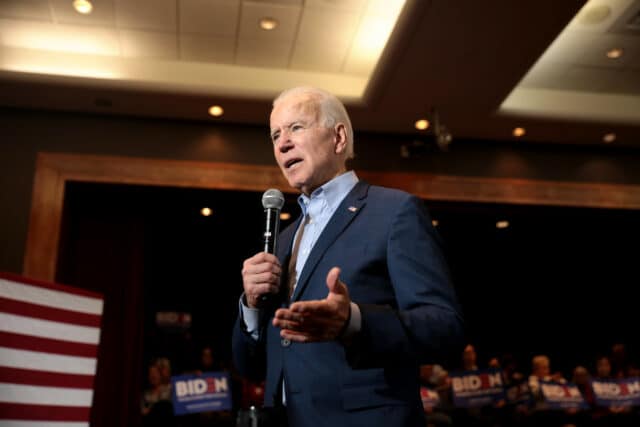One way or another, Election Day 2020 will be an historic one, with stakes akin to the election of 1932, held in the depths of the Depression or – heavens forbid – 1860.
Everything from our nation’s ability to mount an effective defense against the dread coronavirus to the continued viability of American democracy are all on the ballot, the pundits and experts say.
But one thing that won’t be on the ballot because it just never seems to get any airtime in any debates, presidential or otherwise, is the housing crisis, and specifically, the immense pressure runaway prices and rents have placed on middle– and working–class families.
Yet the housing crisis is right up with there with our wheezing health care system, our growing economic divide and long-simmering issues of racial justice, as one of the top challenges facing our country.
If health care is deemed important enough that every candidate is all but obliged to come up with a plan – or, in the case of President Donald Trump, to spend years faking that he actually has one – then housing certainly deserves the same treatment as well.
And giving the problem the attention it deserves – as an issue worthy of national debate – can also help shed need light on some of the other major issues that face our country, and with which our seriously distorted housing market is inextricably linked, including income inequality and continued, de facto racial segregation.

Former Vice President Joe Biden’s $640 billion plan to attack the housing crisis doesn’t do much to address the biggest hurdle: restrictive local land-use regulations. Photo by Gage Skidmore | CC BY-SA 2.0
Deregulation a Must
To give credit where it is due, even if in a backhanded way, Trump in his mad emperor way pushed housing into the headlines earlier this fall with his racially-tinged ravings about the evils of affordable housing programs.
But it would be hard to argue that Trump has done some sort of public service, even in an unintended fashion, with his remarks only serving to legitimize the vocal minority of NIMBYs in the suburbs in their angry opposition to any and all new housing, especially if it is even remotely affordable.
Former vice president and Democratic candidate Joe Biden, for his part, has proposed spending big on affordable housing initiatives: $640 billion over a decade.
That’s a big number, and the money is badly needed.
Yet it also smacks of business as usual from the Democratic side of the aisle, with a prevailing focus on government programs when we also desperately need our next president and Congress to take a hard look at the regulatory barriers at the heart of the housing crisis.
Sorry, but throwing extra money at a few federal housing programs won’t move the needle when it comes to lowering rents and deflating sky-high home prices.
The U.S. faces a massive housing production crisis, and not just in pricey metros like Boston, New York and San Francisco.
Decades of restrictive zoning on the local level, not to mention a tangle of state-level red tape, have strangled the vitally important middle of the housing market, the moderately-priced capes, ranches and colonials that helped build the American Middle Class, once the envy of the world.
Stifling local and to a lesser extent state regulation has driven up the cost of developable land while steadily reducing the number of homes and apartments built in cities across the country.
Don’t Dismiss the Bully Pulpit
The result has been the transformation of residential construction into an increasingly niche business focused on the production of pricey McMansions and luxury condos and apartments.
New construction, whether it’s single-family homes or new condos and apartments, is increasingly unaffordable to all but the upper middle class and wealthy.
It is a both a striking, physical manifestation of income inequality, as well as a major accelerant on its own as runaway real estate values and prices further pad the portfolios of the wealthy.
All that said, unlike health care which the government already has a major stake in through Medicaid and Medicare, housing is a much harder issue for a president or Congress to influence or shift, with so much of the action happening locally or on the state level.
However, simply giving the housing crisis the due it deserves as one of the country’s major problems would be a badly needed first step.
The power of the presidential bully pulpit shouldn’t be dismissed, and there are likely new regulations and legislation that could help spur states and local governments to start opening their doors to badly needed new housing for all income levels, not just the rich.

Scott Van Voorhis
A President Biden – as it looks increasingly likely in these final days of the 2020 campaign – will surely restore, as he has pledged, a key Obama-era policy aimed at restrictive, discriminatory zoning.
Trump has spent years trashing that initiative, Affirmatively Affirming Fair Housing, with all sorts of racist rants about the how it was designed to pave the way for a takeover of the suburbs by low-income housing.
Here’s hoping a President Biden uses the restoration of this much-maligned and badly needed plan as a springboard to go truly big on housing.
Scott Van Voorhis is Banker & Tradesman’s columnist; opinions expressed are his own. He may be reached at sbvanvoorhis@hotmail.com.




 |
| 
